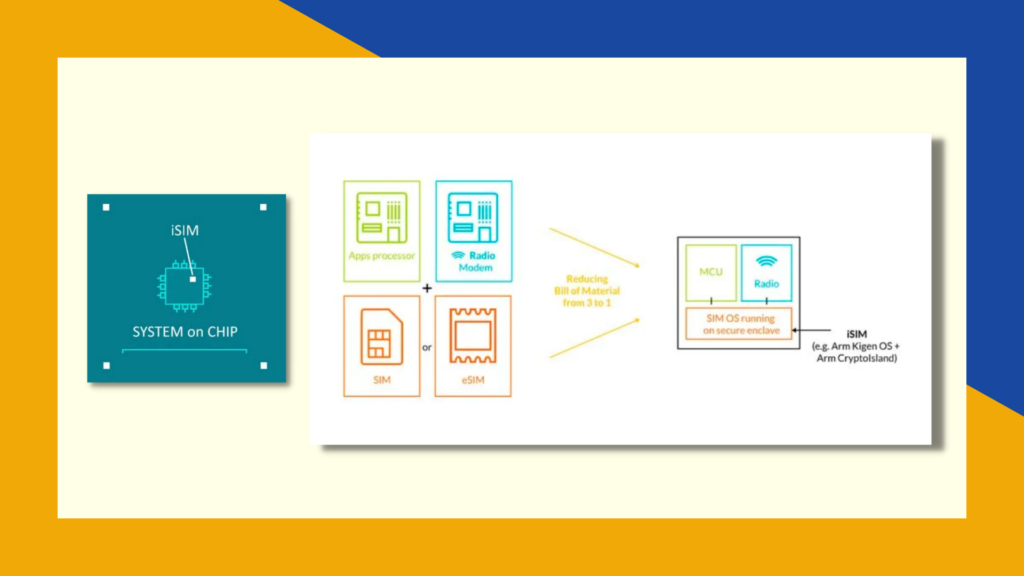
An iSIM is an integrated SIM built into a system-on-chip (SoC) and is expected to replace the nano-SIM and eSIM found in most modern-day devices. While both an iSIM and eSIM have similar functions, and benefits, there are some notable differences.
Most phones still have at least one physical SIM card slot for a nano-sized SIM card. The nano-SIM card has existed for years and is an evolution of the Mini-SIM and Micro-SIM card. The eSIM was released years later. It’s a smaller chip than the nano-SIM and is soldered onto the printed circuit board. It works no differently than the nano-SIM in how it connects the device to the mobile network. The difference though is that the eSIM uses multiple profiles it has saved to verify the mobile network, allowing it to connect to any network operator in minutes.
Unfortunately, the adoption of the eSIM has been very slow. Several manufacturers still make phones that don’t have support for an eSIM and those that do limit it to their high-end models. There are also a lot of mobile operators who have not even adopted the eSIM method. The area where the eSIM is most popular is in the wearable space, such as smartwatches like the Apple Watches.
Enter the iSIM, which was announced in 2018 by Arm as a secure identity solution that replaces a physical SIM card and an eSIM. An iSIM is supposed to make it easier to connect a wider variety of devices to the internet. Its ease of use and implementation eliminates not only the cost of issuing physical SIMs, but the cost of deploying them and the need for physical access when there is a need to change the mobile network operator.
With an iSIM, it is also easier to connect IoT devices with a smaller footprint that don’t have space for a physical SIM card. While an eSIM takes up less space than a nano-SIM, an iSIM is much smaller since it is integrated into the device’s processor. This allows manufacturers to use the additional space that would have been occupied by a SIM tray or eSIM for other components. Furthermore, without the need for a physical SIM card, a device with an iSIM (or eSIM) can be easily designed to be water-resistant.
The iSIM brings the benefits associated with an eSIM, but has a significant difference from an eSIM, which can also be termed its biggest advantage – its security. By integrating the SIM with the system-on-chip (SoC), the SIM is protected from being tampered with as it runs on a secure enclave built into the chipset. Also, since an iSIM can’t be removed, it makes it harder to steal a mobile device that has one.
iSIMs are mainly designed for IoT devices as it allows manufacturers to add cellular connectivity to these devices, but as we can see, smartphones can benefit from the advantages it brings. Unfortunately, Qualcomm’s new mobile processor, the Snapdragon 8 Gen 1 appears to be the only mobile platform with support for an iSIM, so the adoption rate may even be slower than that of the eSIM.

